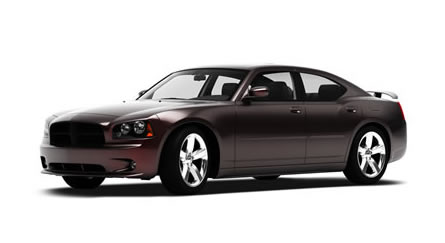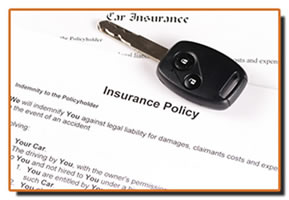Car Accidents Involving Someone Else's Car
Should you borrow a friend's car? Should you let someone borrow yours? Who is covered, the car or the driver? Whose insurance company is liable if the borrowed car or truck gets into an accident? Before we examine the possible scenarios, let's consider some principles and definitions that apply to borrowed car situations. Needless to say, state laws and insurance policy language might uncover exceptions to these principles, so you should always read your policy and/or consult an attorney in the event of an accident.

Insurance Follows the Vehicle
First and foremost: insurance follows the vehicle and borrowing a vehicle is like borrowing the vehicle owner's insurance policy. You should know (or ask) what the owner's policy covers before borrowing a vehicle. This of course assumes a "reasonable belief" that the owner of the vehicle gave the borrower permission to use the vehicle, explicitly or implied. Without permission to drive, the borrower is not a "covered person" under the owner's policy.
Actual policy language is likely to state: "no vehicle shall be considered a covered auto unless there is sufficient reason to believe that its use is with permission of the owner, and unless it is used by you or a family member." Note that most policies consider use by you (assuming you're the main insured oersin) and family members to be essentially the same.

Define "You"
Wait a minute - you're considered to be the same person as your family (or other members of the household) to your insurance company? Like many insurance issues, it's slightly more complicated than that so, in this instance, technical definitions according to your provider will play a large role in the end outcome. Let's examine some of the most relevant definitions for "borrowed car accidents" taken from a typical policy:
- Family member: person related to you by blood, marriage or adoption, who is a resident of your household, including a ward or foster child under the age of 21.
- Covered person (driver): you or any family member with respect to the ownership, maintenance or use of your covered auto, or any person using your covered auto. (Note that most policies will say "a covered person does not mean any person using a vehicle without a reasonable belief that the person is entitled to do so and that the person is using the vehicle within the scope of permission granted.")
- Covered person (injured): includes "a pedestrian struck by the covered vehicle and a person injured while riding in or driving an insured vehicle being used by permission of the named insured."
- Covered auto: a private passenger or utility automobile owned by you and described in the declarations for which a specific premium charge indicates that coverage is afforded.
Note: a "covered auto" is also any other private passenger or utility automobile or trailer not owned by you or any family member while being temporarily used as a substitute for any other vehicle described in this definition because of its withdrawal from normal use due to breakdown, repair, servicing, loss or destruction.

Applying these Principals to an Accident Involving a Lent or Borrowed Car
Scenario #1: You borrow a car from someone and you ARE on their policy. This isn't strictly a "borrowed" car issue, because if you are on the same policy as the person from whom you are "borrowing" a car, you are normally a family member or occupant of the household with the same coverage as the primary insured. Everyone named on a group policy has the same coverage no matter what vehicle is being driven.
Scenario #2:You borrow a car from someone and you ARE NOT on their policy. You are borrowing their insurance as well because insurance travels with the vehicle. You are covered only to the extent of the owner's policy and can be liable for the amount of the settlement that exceeds their coverage. The borrower's insurance (your insurance in this case) might be used secondarily if your policy provides coverage for you in a borrowed vehicle.
Scenario #3: Someone borrows your car and they ARE on the same policy. There is coverage in this instance for the same reason as scenario #1.
Scenario #4: Someone borrows your car and they ARE NOT on the same policy. If their accident exceeds your limit of liability and you allowed them to borrow the car, you could be personally liable for the balance. Additionally, if the driver was negligent or their license had been suspended then you, as the lender, could also be liable for criminal penalties. If someone not named on your policy borrows your car frequently enough to appear to be a regular driver, the insurance company could argue you deliberately left them off the policy in order to save money and could deny the claim entirely for false statements.

Additional Considerations
Is the driver of the car covered in each circumstance? The driver is covered if the borrowed car is insured.
Is the borrowed car itself covered? Always, if the borrower had explicit or implied permission to borrow the vehicle and the vehicle itself is insured.
Which party's insurance policy takes the hit, the owner's or borrower's? Insurance follows the vehicle, so the owner's policy takes the hit. The owner's insurance rates are likely to go up even if the damage is covered by the type of coverage they have.
If the accident is major, who is liable for damages: the driver or owner of the vehicle? The owner's policy is primary, and the driver's policy may pay additional damages if they exceed the owner's limits. If the driver of the vehicle has no insurance, either the driver or the owner (or both) may be personally liable for any amount above the vehicle's coverage.
Can the vehicle owner compel the borrower to pay for or do anything? Other than filing a lawsuit, probably not, but it's a moot point if the owner's insurance pays the damages. If the borrowed vehicle was un-insured or under-insured, the borrower's policy may pay in the event the vehicle was borrowed due to the borrower's insured vehicle being out of service.





